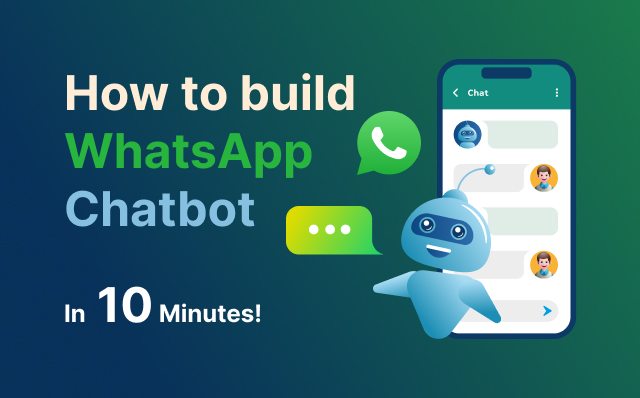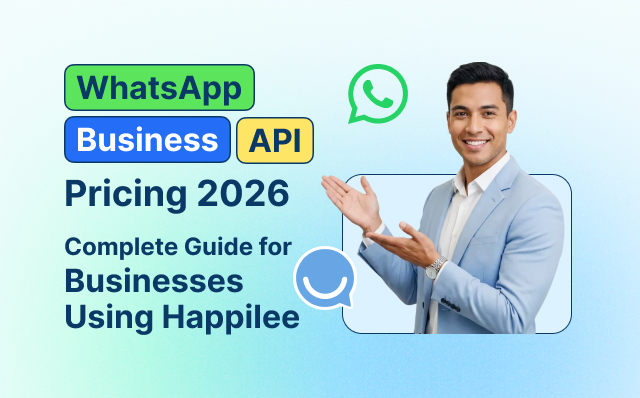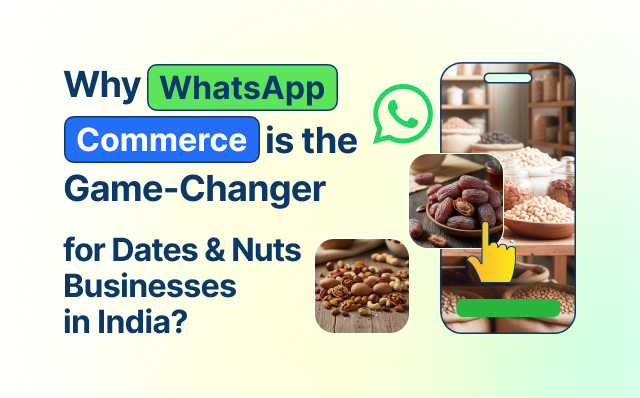Introduction
In today’s digital age, businesses are constantly seeking innovative ways to streamline customer interactions and boost efficiency. WhatsApp, as one of the world’s most popular messaging platforms, offers a unique opportunity for businesses to engage with their customers in real-time. One of the most effective tools for achieving this is a WhatsApp Chatbot – an automated messaging system that can handle customer queries, provide information, and even facilitate transactions. In this guide, we’ll take you through the step-by-step process of building your own WhatsApp Chatbot, starting from the basics.
Understanding WhatsApp Chatbots
What is a WhatsApp Chatbot?
A WhatsApp Chatbot is an automated messaging system designed to interact with users on the WhatsApp platform. Unlike traditional human-operated chat services, Chatbots are powered by artificial intelligence (AI) algorithms that enable them to understand user queries, provide responses, and perform tasks without the need for human intervention.
Understanding Chatbot Functionality: WhatsApp Chatbots utilize natural language processing (NLP) and machine learning algorithms to interpret user messages and extract relevant information. By analyzing the context of the conversation, Chatbots can generate accurate responses and take appropriate actions to fulfill user requests.
Key Features of WhatsApp Chatbots:
- Understanding User Queries: Chatbots are programmed to comprehend a wide range of user queries, including questions, commands, and requests for information.
- Providing Responses: Based on the analysis of user messages, Chatbots generate appropriate responses in real-time, mimicking natural human conversation.
- Performing Tasks: Chatbots can perform various tasks on behalf of users, such as providing product information, processing orders, booking appointments, and more.
- Automation: One of the primary features of Chatbots is their ability to automate repetitive tasks and streamline communication processes, reducing the need for manual intervention.
Why Use a WhatsApp Chatbot?
Businesses across various industries are increasingly adopting WhatsApp Chatbots to enhance customer service, improve operational efficiency, and drive business growth. Here are some key reasons why businesses choose to implement Chatbots:
1. Improved Customer Service: WhatsApp Chatbots offer businesses a scalable solution for delivering personalized customer support round the clock. By providing instant responses to customer queries, Chatbots can significantly enhance the overall customer experience and satisfaction levels.
2. 24/7 Availability: Unlike human agents, Chatbots are available 24/7, allowing businesses to provide uninterrupted support to their customers regardless of the time of day or night. This ensures that customers can get assistance whenever they need it, leading to higher levels of engagement and loyalty.
3. Increased Efficiency: Chatbots help businesses save time and resources by automating repetitive tasks and handling a large volume of inquiries simultaneously. By streamlining communication processes, businesses can allocate their human resources more effectively and focus on more value-added activities.
4. Scalability: As businesses grow and customer demand increases, Chatbots can easily scale to handle higher volumes of inquiries without requiring additional manpower. This scalability ensures that businesses can maintain high-quality customer service standards even during periods of peak activity.
5. Cost Savings: By automating routine tasks and reducing the need for human intervention, Chatbots can help businesses save on labor costs and operational expenses. Additionally, Chatbots can handle multiple conversations simultaneously, further optimizing resource utilization and maximizing cost savings.
Getting Started with WhatsApp Chatbots
- Choosing the Right Platform
- Overview of different platforms offering WhatsApp Chatbot solutions.
- Factors to consider when selecting a platform (ease of use, features, pricing, etc.).
- Setting Up Your WhatsApp Chatbot
- Step-by-step guide to creating a WhatsApp Chatbot using a preferred platform.
- Explaining the process of integrating with WhatsApp Business API.
Building Your WhatsApp Chatbot
Once you’ve chosen the right platform and familiarized yourself with its features, it’s time to start building your WhatsApp Chatbot. This section will guide you through the process of designing chatbot flows and customizing responses to create engaging and user-friendly experiences.
Designing Chatbot Flows
- Importance of Designing Conversational Flows:
- Chatbot flows represent the conversation path between the user and the Chatbot. Designing well-structured flows ensures smooth interactions and effective communication.
- Emphasize the importance of guiding users through a logical sequence of steps to achieve their goals or resolve their queries efficiently.
- Tips for Creating Engaging Flows:
- Keep the conversation flow natural and conversational, mimicking human interaction as closely as possible.
- Break down complex tasks into smaller, more manageable steps to avoid overwhelming the user.
- Use clear and concise language to convey information and instructions effectively.
- Incorporate interactive elements such as buttons, quick replies, and multimedia to engage users and enhance the overall experience.
Customizing Responses
- Adding Personalized Touches:
- Personalization is key to creating meaningful interactions with users. Tailor your responses to address the specific needs and preferences of each user.
- Use variables to dynamically insert user-specific information such as name, location, or previous interactions into your responses.
- Acknowledge user input and provide relevant responses that demonstrate understanding and empathy.
- Incorporating Media Elements:
- Images, videos, and files can enhance the visual appeal and effectiveness of your Chatbot responses.
- Use media messages to showcase products, provide visual instructions, or share important documents with users.
- Ensure that media elements are relevant to the context of the conversation and support the user’s goals or objectives.
Types of Messages in Flow Builder
- Question Message:
- Use question messages to prompt users for input or feedback.
- Design questions that are clear, concise, and easy to understand.
- Provide response options or suggestions to guide users in their responses.
- List Message:
- List messages are useful for presenting multiple options or choices to users.
- Organize lists logically and categorize items for easy navigation.
- Include descriptive labels or images to help users make informed decisions.
- Button Message:
- Button messages offer users predefined actions or options to choose from.
- Create buttons with clear labels and concise descriptions of each action.
- Use buttons to guide users through specific tasks or workflows.
- Media Message:
- Media messages allow you to share images, videos, or files with users.
- Select media content that enhances the user experience and adds value to the conversation.
- Ensure that media files are optimized for fast loading and display correctly on different devices.
By designing well-structured chatbot flows and customizing responses with personalized touches and multimedia elements, you can create engaging and user-friendly experiences that delight your users and drive meaningful interactions on WhatsApp.
Conclusion
Building a WhatsApp Chatbot involves careful planning, design, and customization to create engaging and user-friendly experiences. By understanding the importance of designing conversational flows and customizing responses, businesses can create Chatbots that effectively address user queries and fulfill their needs. Incorporating various message types such as questions, lists, buttons, and media messages adds versatility and richness to the Chatbot’s interactions, enhancing the overall user experience. As businesses continue to embrace Chatbot technology, investing time and effort into building well-designed Chatbots can yield significant benefits, including improved customer engagement, increased efficiency, and enhanced brand perception.
Partnering with Happilee – Your WhatsApp API Service Provider
As you embark on your journey to build a WhatsApp Chatbot, partnering with a reliable WhatsApp API service provider like Happilee can make all the difference. Happilee offers a robust platform that enables seamless integration with WhatsApp Business API, allowing businesses to build, deploy, and manage their Chatbots with ease. With Happilee’s comprehensive suite of tools and features, businesses can unlock the full potential of WhatsApp Chatbots and deliver exceptional customer experiences.
Whether you’re a small startup or a large enterprise, Happilee provides scalable solutions tailored to your specific needs. From API integration and message templates to analytics and reporting, Happilee empowers businesses to leverage WhatsApp Chatbots as a powerful tool for customer engagement and business growth.
So why wait? Partner with Happilee today and take the first step towards building your WhatsApp Chatbot to revolutionize your customer communication and drive success in the digital era.


